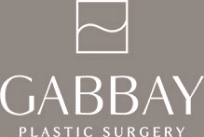Ear Surgery
Providing Adults & Children With Proportionate, Balanced Ears
- Protruding ears present on one or both sides of the face
- Enlarged ears
- Adult dissatisfaction with previous ear surgery
Table of Contents
Correcting Many Types of Ear Asymmetry
- Rib Graft: utilizes your body’s own biological tissues (rib cartilage and skin) to reshape or reconstruct the ears
- Medpor: this technique uses a synthetic material consisting of a porous, high-density polyethylene (PHDPE) covered by a skin graft. Although a Medpor framework is not made of living tissue as in the Rib Graft technique, Medpor material does become vascularized as the blood vessels of the living tissue infiltrate the porous holes within the synthetic framework.
- Soft Tissue: if enough of the deformed ear is present, Soft Tissue Ear Reconstruction may be a better choice than the Rib Graft or Medpor techniques. Soft-tissue reconstruction is an option for children or adults with smaller ears or ears that are folded over.
- Tissue Expansion: this technique employs the use of a balloon filled with saline to slowly expand the area of skin in the ear region over time
During recovery from your otoplasty surgery, you will be asked to wear a headband during sleep to protect the surgical correction for the first 2-3 weeks. Patients can resume normal activities approximately two weeks after otoplasty surgery, although complete healing of the wounds and reduction of swelling may take 6-12 weeks. If you would like more information about ear surgery, please contact us and we will be happy to answer any and all of your questions, and to schedule an initial, complimentary consultation with Dr. Gabbay. You may also click the link below to read a more in-depth description of the otoplasty procedure.
Is Otoplasty Right for You?
- Protruding or overly large ears
- Prominent ear deformity
- Stahl’s ear deformity: abnormal pointing of the top of the ear
- Earlobe ptosis or sagging
- Earlobe cleft: a split in the earlobe due to prolonged earring use
- Reconstruction after traumatic injuries
- Reshaping a folded or cauliflower ear deformity
- Improving unbalanced or asymmetrical ears
- Cupped ears: disproportionately small ears
- Lop ear: ear tip folds downward and forward
- Shell ear: a curve in the outer rim, as well as the natural folds and creases of the ear, are missing
- Disproportionately large or stretched earlobes, or earlobes with wrinkles or creases
- Missing Ears: ears can be constructed for those who were born without them or who lost them through injury
Determining Good Candidates for Ear Surgery
If you are interested in learning more about ear surgery, please call us and let us schedule your personal consultation with Dr. Gabbay. During your meeting, Dr. Gabbay will discuss your overall expectations and aesthetic goals, in order to determine whether otoplasty is a suitable option for you.
for a consultation!

Gallery
About the Procedure
Our Beverly Hills ear surgery expert can help you to achieve balance in your facial features. Call (310) 205-9500 today to learn more!



